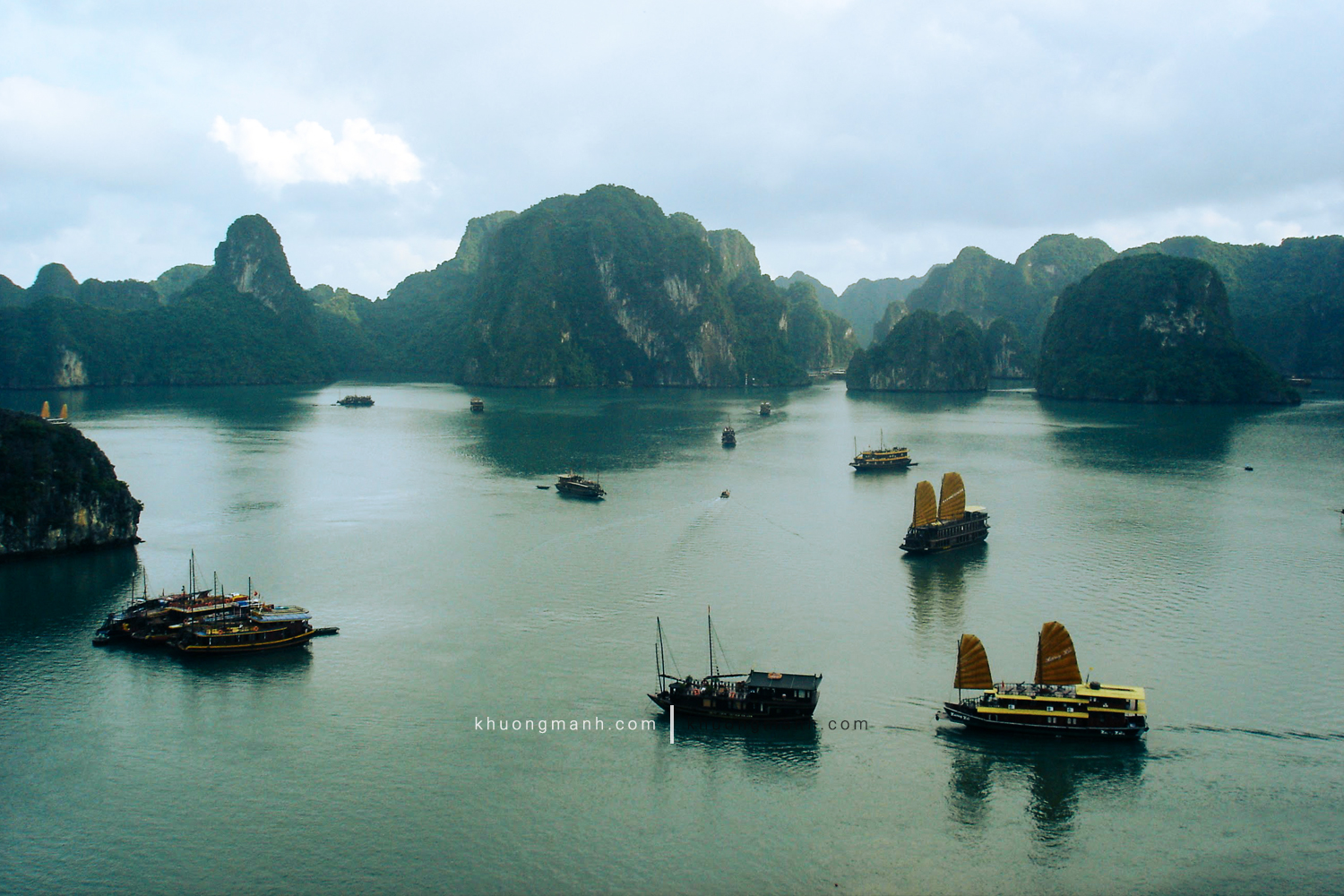Your cart is currently empty!

Halong Bay
Halong Bay Vietnam of Ha Long Bay is situated in Quang Ninh province, in the north-east region of Vietnam, about 4 hour drive from Hanoi. Halong Bay comprises the sea area of Halong City, Cam Pha Town and a part of Van Don island district, Quang Ninh Province. It borders Cat Ba Island to the south-west, the mainland to the west with a 120km-long coastline.
The History
Halong Bay covers a total area of 1,553km², including 1,969 islands of various sizes, 989 of which have been given names. There are two kinds, limestone and schist, which are concentrated in two main zones: the south-east (belonging to Bai Tu Long Bay) and the south-west (belonging to Ha Long Bay). The average geological age of the islands is between 250 and 280 million years old.
Islands and Islets
Halong Bay Vietnam has been called by the great national poet Nguyen Trai: “a marvel of the earth erected towards the high skies”. While exploring the bay, you will feel lost in a legendary world of stone islands which shapes change depending on the angle and the light.
There are many names given to islands according to their shapes and forms such as Hon Dau Nguoi (Human Head Islet), Hon Rong (Dragon Islet), Hon Canh Buom (Sail Islet), Hon Trong Mai (Cock and Hen Islet)…
Halong Bay Caves
The beauty of Halong Bay Vietnam does not consist only in the forms of its mountains, islands and the colour of its waters, but also in its infinitely rich system of grottoes and caves such as: Thien Cung (Heavenly Palace Grotto), Dau Go (Driftwood Grotto), Sung Sot (Surprise Grotto), Tam Cung (Three Palace Grotto), Trinh Nu (Virgin Grotto)…. Each is a grandiose and refined natural architectural creation.
Floating Village
Apart from natural beauty, Halong bay is also home to four fishing villages in which Cua Van is the biggest with 176 houses and nearly 750 residents. The fishing village remain both tangible and intangible marine culture attracts a lot of travelers both domestic and international market.
Cua Van fishing village situates 30 km from Halong pier in the peaceful bay of Van Gia. Coming here guests can contemplate the scenery of boat anchoring in front of floating houses, warm smile of children whose skin is tanned by sunlight, join in some activities: rowing coracle, catching fish, shrimp,,, and discover the daily life of these fishermen.
World Heritage Site
On December 17, 1994, Halong Bay Vietnam was recognized as world natural heritage for its natural beauty at the 18th meeting of the World Heritage Committee of UNESCO in Thailand. On December 12, 2000, Halong Bay was recognized as world natural heritage for the second time based on its geological value at the 24th meeting of the World Heritage Committee of UNESCO in Cairns, Australia.
The recognized site covers an area of 434km², comprises 775 islands and forms a triangle: with Dau Go Island (Driftwood Grotto) to the west; Ba Ham Lake (Three Shelter Lake) to the south and Cong Tay Island to the east.
When to go to Halong Bay Vietnam
Halong Bay’s climate is symbolic of the climate of North Vietnam weather; featuring all four seasons. In summer, it is hot, humid and rainy, while monsoons flourish. The average annual temperature recorded is 22.9 °C. In winter, it is cold (between 1 and 3 °C), dry, and sees little rainfall (between 150 mm and 400 mm). The average humidity is 82 percent. Annual average rainfall, influenced by north-eastern monsoons, varies between 1,700 mm and 2,400 mm (maximum recorded is 2751 mm), with rainfall concentrated in the summer months for 90 to 170 days, particularly in July and August.



